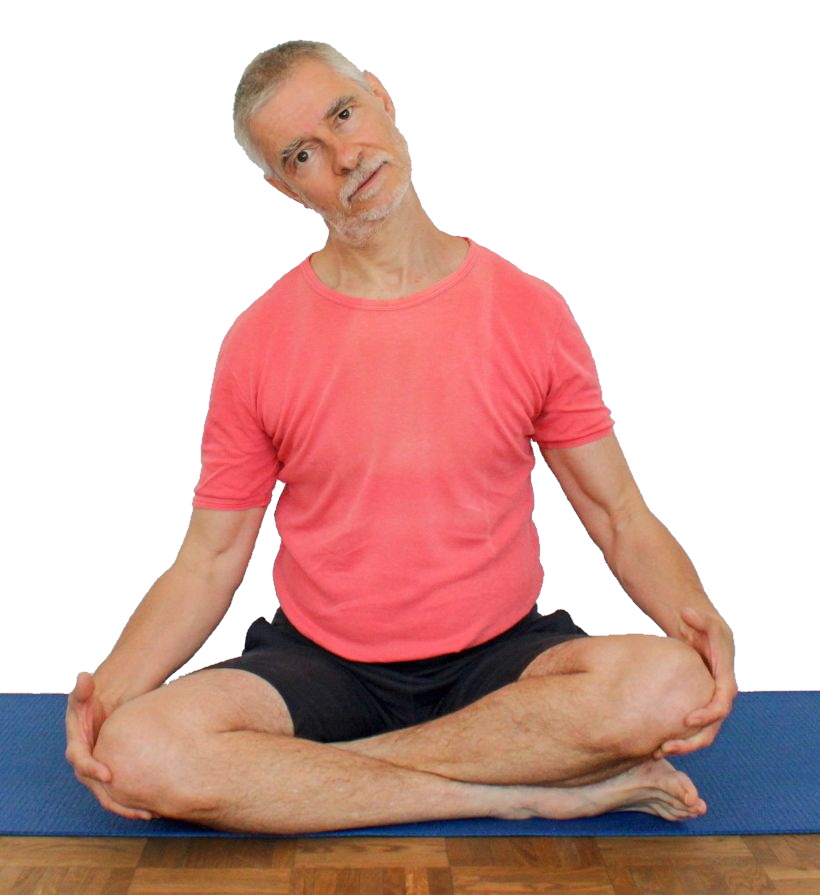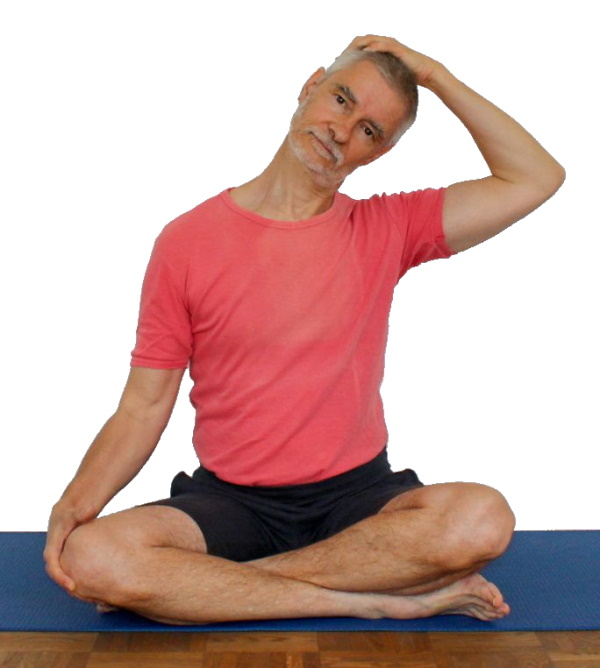- sit comfortably and upright, e. g. cross-legged. Stretch the spine and head vertically upwards.
- tilt the head to the right for two seconds without using the performing
muscles too much to prevent cramping.
- move the head back to the middle position and then tilt it to the left in the same way
- move the head back to the middle position
- Continue to tilt your head in the side change, increasing the duration
of each turn by one to two seconds.
|
- Take care not to mix the tilt of the head with its rotation to the same side.
In addition to external control by a partner, a mirror can also be very helpful.
The head does not move forward or backward from its frontal plane
- The performing muscles that actively tilt the head to the side must not be
used too much, otherwise there is a risk of cramping as with all muscles
that are used near the maximum of their concentric contraction.
This danger would be even greater if they were already strained or cramped.
Instead, in order to enhance the stretching effect, the side-equal arm
can be used to gently push against the head with the hand
(caution: large lever arm!) from contralateral towards the performed side.
The supporting arm must of course be changed to change side of the pose.
- Keep your shoulder blades down! Depending on which muscle areas are tense or
cramped, this is essential for the effect! In order to keep the shoulder
blades fairly securely down (anatomically speaking in depression),
it is possible to press both hands against the respective thigh from
below with a little pressure.
- in cases of significantly reduced flexibility due to tension/cramping/shortening,
there are often side differences. Sometimes the head can be tilted only
10° -15° on one side, but at least 30° - 40° should be reached on both sides.
| known issues that may occur even when practicing correctly |
|
|


